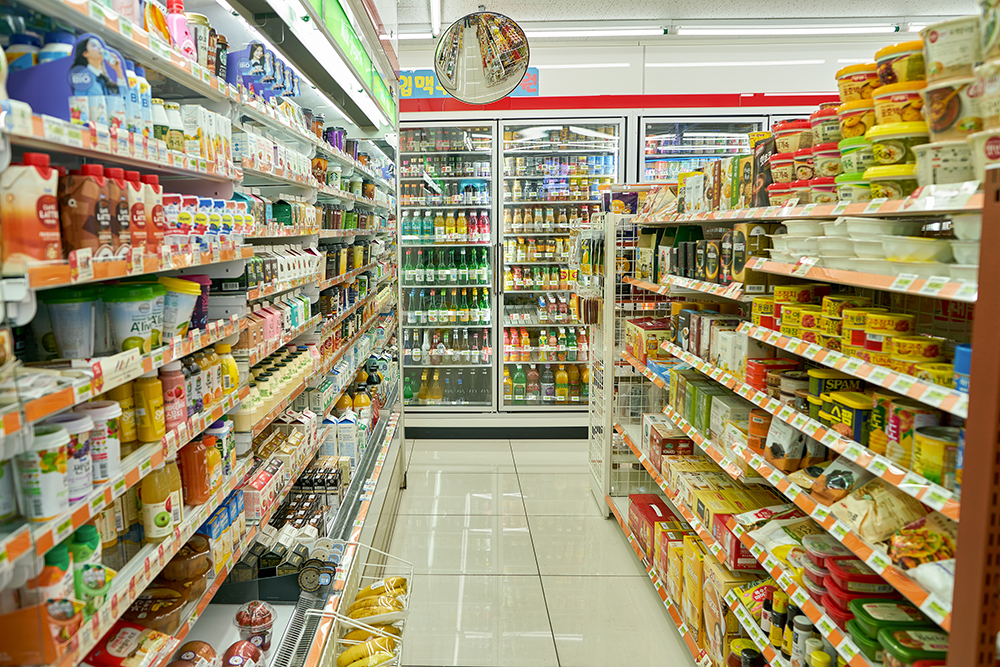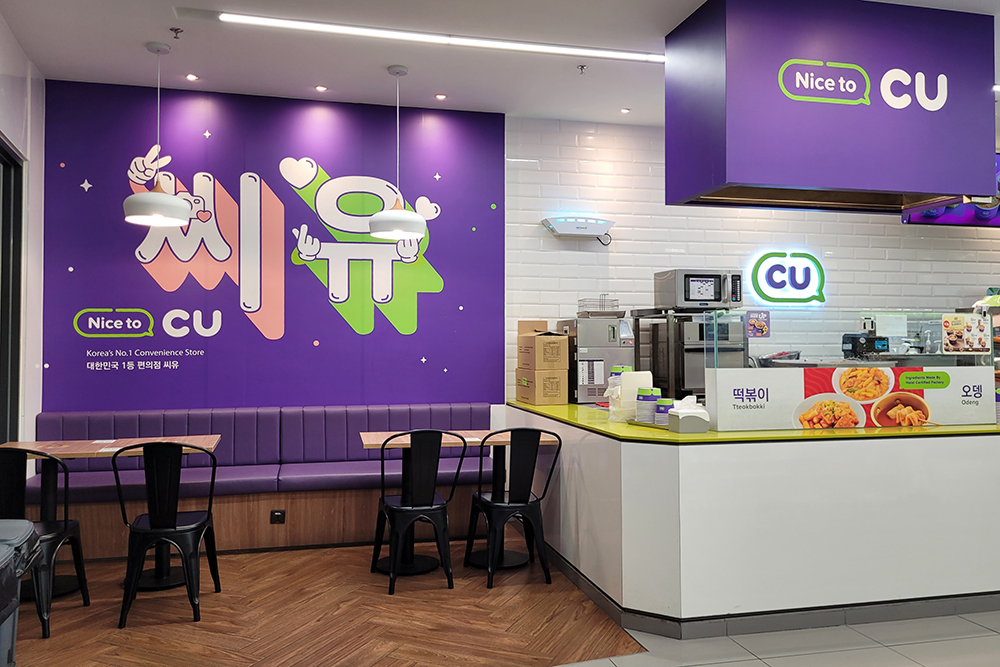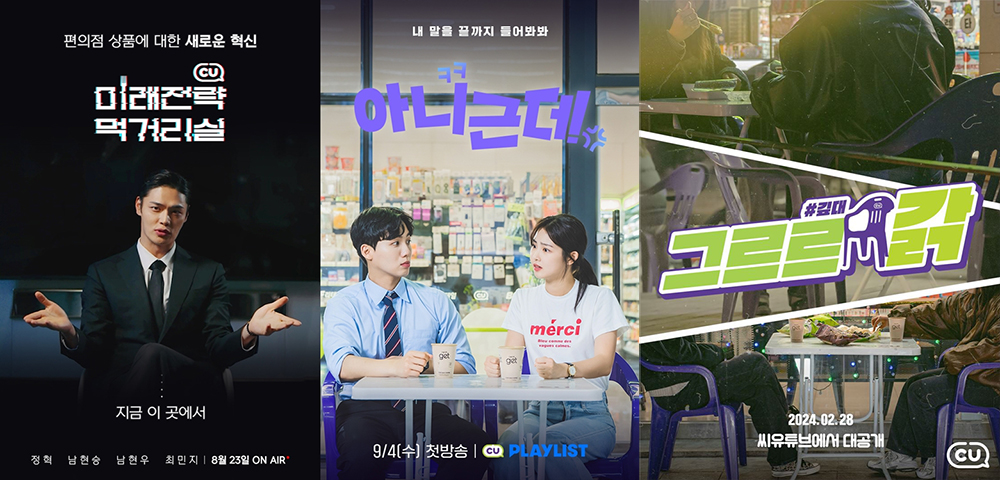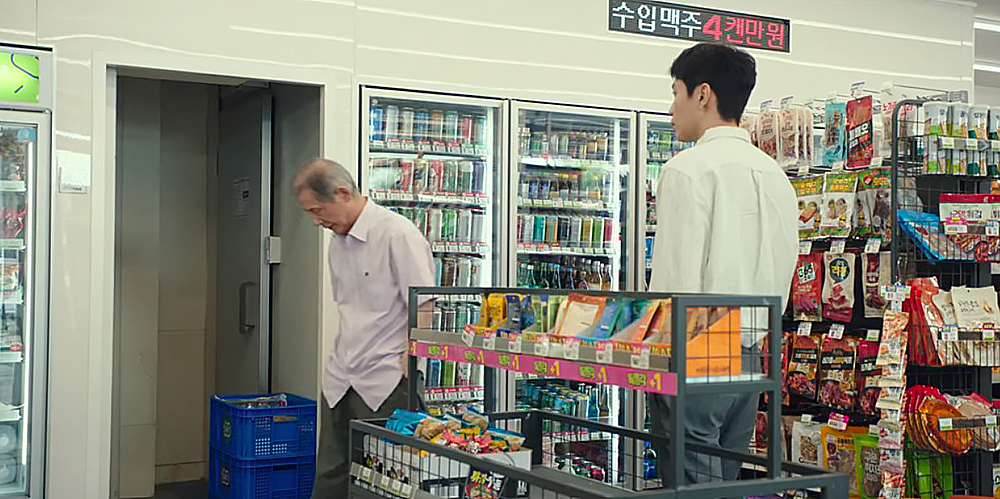K-Content News
- January 13, 2025 | Broadcasting/Startup/Immersive Content
K-Convenience Stores, Now a K-Content Platform
Convenience stores, often seen in K-dramas, are undergoing a transformation. Their role is shifting from simply selling goods into spaces where various content can be experienced. Here is the current state of K-convenience stores establishing themselves as content platforms.

©Shutterstock
K-Convenience Stores: The New "K" Brand
The letter "K" has evolved into a global brand, encompassing everything broadly categorized as "culture"—K-content, K-pop, K-food, K-beauty, K-classic, K-fashion, and more. "K" is used as a word guaranteeing quality. When "K" is attached to things made or originating in Korea, it creates curiosity based on trust. While the “K" prefix does not always guarantee universal acclaim, it generally meets or exceeds a certain level of expectation.
Among the latest additions to the K-brand family is the convenience store. Some might question, "Convenience stores are content?" However, in the broader context, convenience stores have become content themselves. Stories of people coming and going flow and accumulate in convenience stores that have established themselves as lifestyle platforms in every neighborhood. Thus, a solid foundation for content was created. Convenience stores stimulate creators' imagination and produce impressive scenes in movies, dramas, webtoons, and novels. From the audience, viewer, and reader's perspective, a specific scene comes to mind when thinking of convenience stores.
What might have remained merely a space for sparking imagination has evolved into a cultural powerhouse. Korean convenience stores earned the K modifier while sweeping through Ulaanbaatar, Mongolia's capital. Convenience stores first entered Mongolia in 2018. CU took the first step, and GS25 followed closely as a latecomer, escalating competition. Korean convenience stores, armed with K-pop and K-food, dominated Ulaanbaatar, establishing themselves as "hot" spaces, especially among young people. The K-convenience store phenomenon can be attributed to its expansion abroad alongside K-content, creating a unique synergy between cultural exports and everyday spaces. Content and space create synergy through K. K-convenience stores are not limited to Mongolia. Their status has been cemented by foreign tourists visiting Korea, many of whom include convenience stores as part of their travel itineraries.

Korean convenience stores have become easily accessible spaces in Mongolia, Kazakhstan, and other countries. ©Shutterstock
Convenience Stores Reborn as New IP
Equipped with the "K" engine, convenience stores are rapidly amplifying their synergy with K-content. Recently, CU partnered with Billboard Korea, which officially launched in Korea for the first time, to produce "convenience store web entertainment" set to launch in mid-September. Billboard is the most influential global entertainment media brand, its charts continue to shape trends worldwide. Billboard choosing convenience stores as its first partner for entering the Korean market is analyzed as being due to convenience stores being where K-content spreads most quickly and trendily. CU alone has about 17,000 stores nationwide. When convenience stores combine with social media, they provide shortcuts enabling faster word-of-mouth. As it's a collaboration with a global company, K-pop takes center stage. "T-Time Grrrr Gak," released on CU's official YouTube channel "CUTube," is a talk show featuring K-pop artists. CU's IP "Grrruk Gak" varies into dramas and web entertainment. Convenience stores are trending toward expanding their content extensibility while utilizing IP.

CU's convenience store web entertainment content created in collaboration with Billboard Korea ©BGF Retail
Convenience Stores: New Venues for K-Content Distribution
Convenience stores are also leading various K-content distribution. While physical stores play a role, mobile applications are at the forefront of this effort. GS25 pre-sells cultural products on its mobile app "Our Neighborhood GS." This year, they sold LE SSERAFIM albums, and last year ENHYPEN albums through some offline stores and the app. A notable point is the high utilization of convenience store apps by foreigners. When pre-selling K-pop star albums on "Our Neighborhood GS," over a quarter of sales came from foreigners. Other statistics confirm convenience store apps' contribution to K-content distribution. CU sells popular K-pop artists' albums on its own app "Pocket CU." Idol names frequently appear in the top rankings of convenience store app popular searches. Stores in Seoul's Hongdae and Seongsu areas, frequented by foreign tourists and those in their teens and twenties, strategically sell K-pop related products. A Hongdae CU pop-up store selling TOMORROW X TOGETHER albums last October was hugely successful with about 4,000 visitors. Selling K-content related goods or star photo cards at convenience stores has become so established it is no longer special. Rather, differentiation strategies emphasizing "exclusive sales" are necessary. Seven-Eleven's exclusively sold "BTS Docking Power Bank," and emart24's exclusive sales of girl group STAYC's first full album including photo cards were popular. CU partnered with Netmarble to sell collaboration products for the action game "Solo Leveling: ARISE" and offered in-game items as prizes.

Netmarble and CU's "Solo Leveling: ARISE" collaboration ©CU Official Instagram
Convenience Stores Becoming Content Themselves
Convenience stores serve as central themes in various pop culture works. The bestseller novel "Uncomfortable Convenience Store," drama "Backstreet Rookie," webtoon "Welcome to the Convenience Store" are works prominently featuring convenience stores. Dramas and movies also handle convenience store spaces diversely. In last year's Netflix hit "The Glory," convenience stores and triangle kimbap were used as major drama elements. Even in "Squid Game," which globally demonstrated K-content's appeal, convenience store scenes are repeatedly discussed. The scene where two protagonists, Seong Gi-hun (Lee Jung-jae) and Oh Il-nam (Oh Young-soo), talk while drinking soju with convenience store snacks at a makeshift table is noted for succinctly showing an aspect of modern Korean society. This scene exemplifies how the space itself can amplify the narrative impact of content. The convenience store where the drama was filmed attracted so much interest it was temporarily included in tour courses.
Convenience stores also appear in "My Liberation Notes," the drama that sparked the Son Suk-ku syndrome. It was both the workplace of Yeom Chang-hee (Lee Min-ki), the second of three siblings, and a place Mr. Gu (Son Suk-ku) frequently visited. Lee Min-ki's character Chang-hee, a corporate sales representative managing convenience stores, represents a less familiar situation. Unfamiliar scenes in familiar convenience stores made viewers interested in "stories behind familiar spaces."

Scene from the drama "My Liberation Notes" ©Phoenix Studio, Chorokbaem Media, SLL
Convenience stores are not exclusive to K-drama protagonists. Following an ordinary Korean's life inevitably includes convenience stores at least once. This is because they are such lifestyle-oriented spaces. Every day, tens of millions of people pass through these 55,000 convenience stores, making them inevitable sources of stories and content. There may be no space as close to the heart of Korean life or as rich in potential for K-content.
Written by Soo-jung Moon (Kookmin Ilbo Distribution Reporter)
Original article URL: https://www.kocca.kr/n_content/kocca_vol33/vol33/02.html
